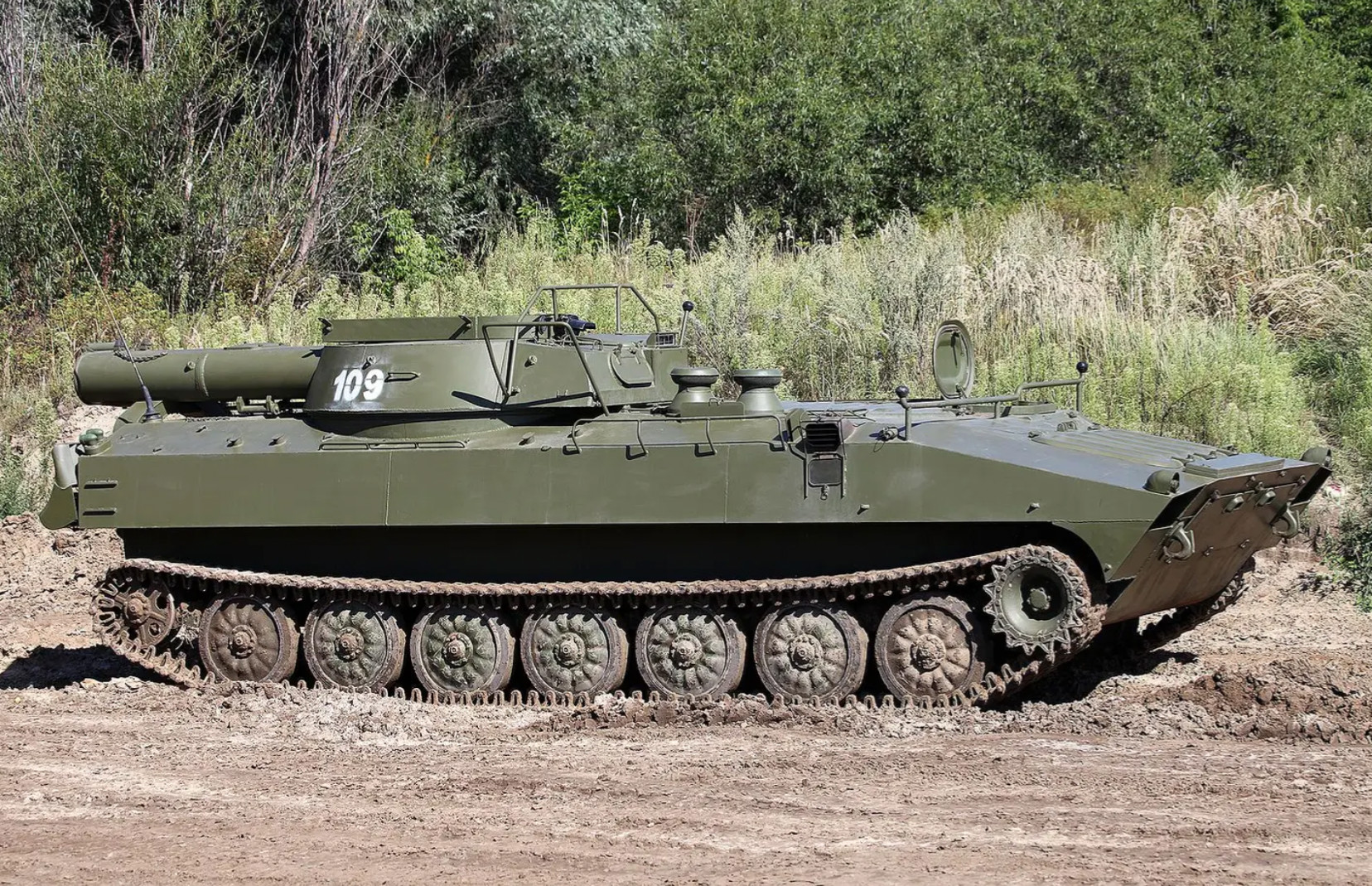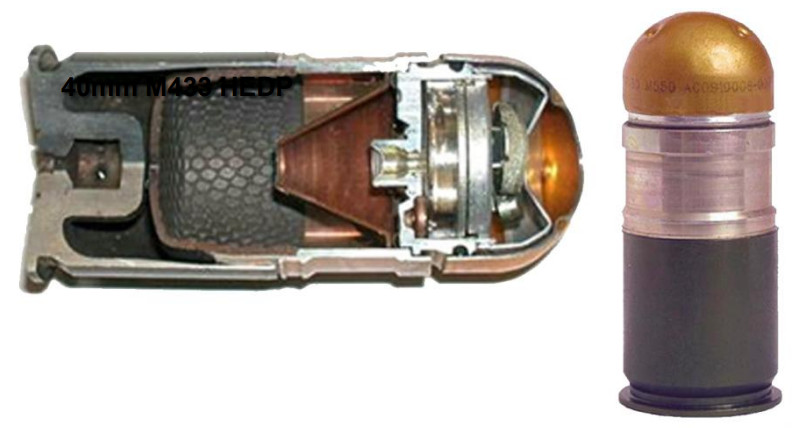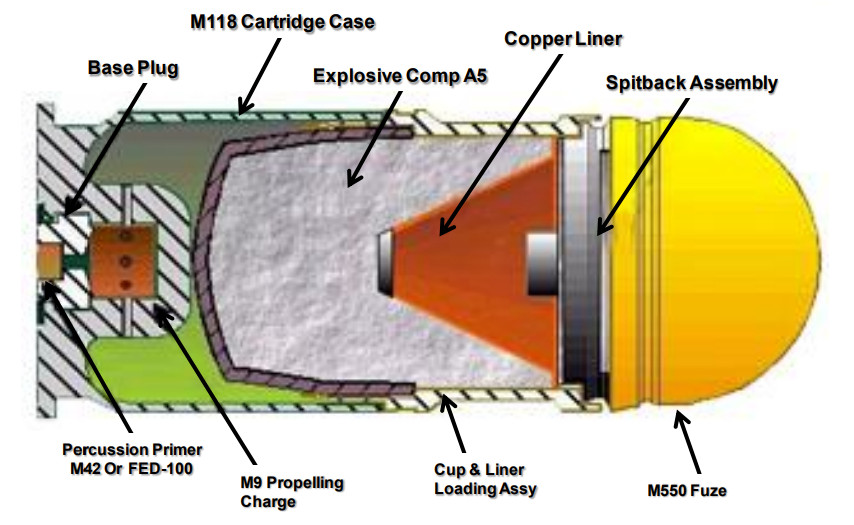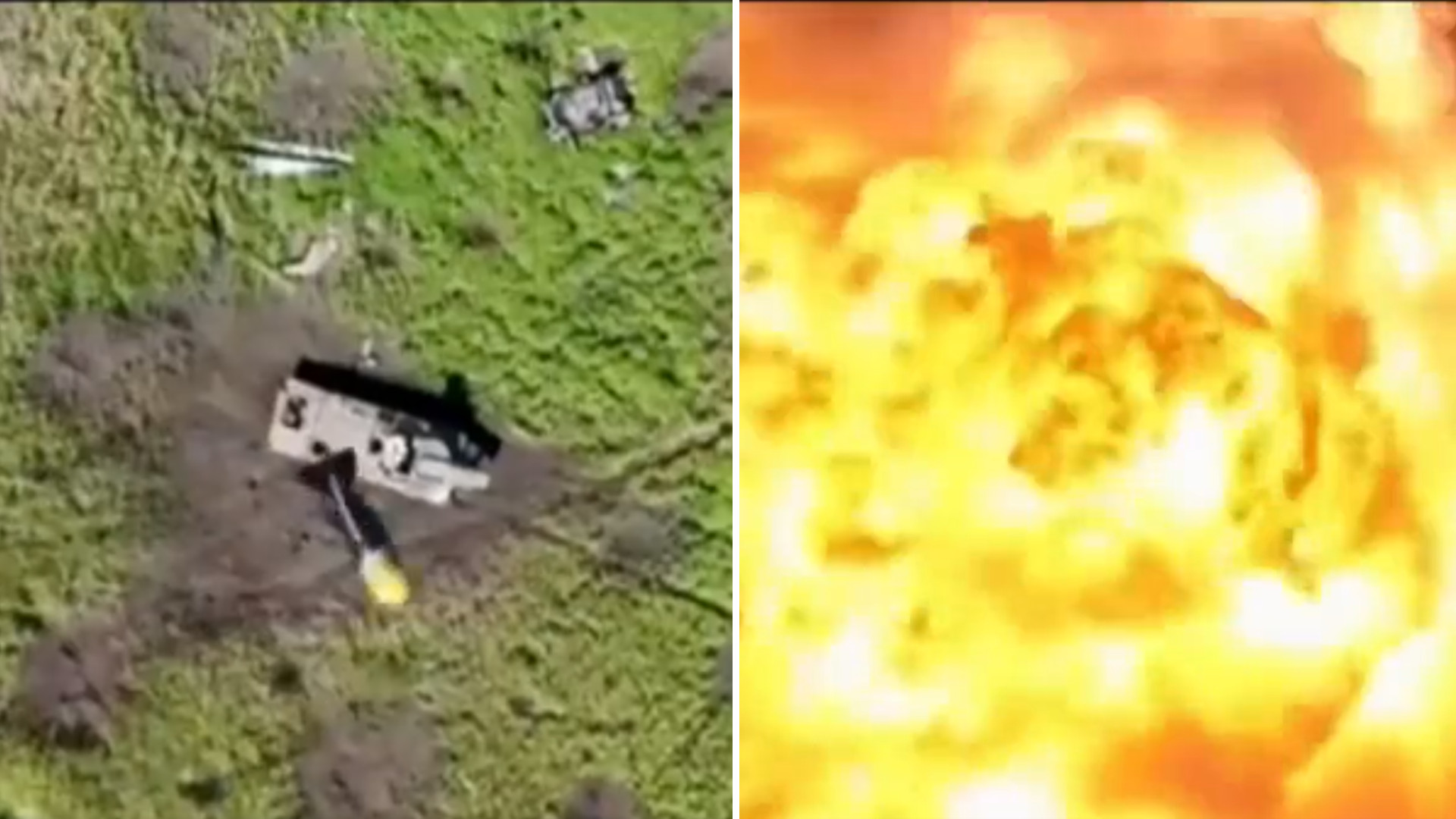Ukrainian forces have destroyed a Russian UR-77 Meteorit mine-clearing vehicle in a spectacular fashion using an improvised munition dropped from a drone. The small bomblet causes a massive secondary explosion that obliterates the vehicle.
A video of the drone attack was posted online through social media accounts linked to Ukraine’s 79th Air Assault Brigade. It’s not immediately clear where or when the footage was shot. The vehicle is also stationary with hatches open, suggesting it may have already been damaged, immobilized, or otherwise abandoned before the bomblet falls inside. UR-77s have been used on both sides of the conflict as valuable tools for cutting through enemy minefields, but they can even be used for attacking hostile forces, especially in dense urban environments.

The bomblet appears to be based around a grenade for use in 40mm grenade launchers combined with a black-colored tail assembly. The gold-colored tip of the grenade points to it being a high-explosive dual-purpose (HEDP) type. A typical HEDP 40mm grenade features a shaped charge designed to penetrate through relatively light armor, as well as a body designed to turn into a hail of deadly fragments that present a threat to unarmored vehicles and personnel.


Even with its multi-purpose design, a 40mm HEDP grenade would, of course, still not be capable of causing the blast seen in the video on its own. This suggests that the UR-77 still had at least one line charge inside when it was struck, which then caused a huge secondary detonation.
The UR-77’s primary role is to fire rocket-assisted line charges to clear minefields from a launcher fitted to the top rear portion of the vehicle’s hull. The launch system on the Meteorit, which uses a chassis derived from the one used on the 2S1 Gvozdika 122mm self-propelled howitzer, can be loaded with up to two line charges at a time.
Each line charge is essentially a rope made up of high-explosives. They are fired into a desired area and then detonate. The overpressure from the blast then sets off any nearby mines, helping to create a safe corridor for friendly forces to pass through.

At least two types of line charges exist that can be used with the UR-77, the UZ-67 and UZP-77. The UZ-67 and UZP-77 can create ‘lanes’ through a minefield that are between 75 and 80 meters (246 and 262.5 feet) and 80 and 90 meters (262.5 feet and 295 feet) long, respectively, according to a 2016 U.S. Army manual on foreign military capabilities. The width of the lanes that both types produce is generally around six meters (nearly 20 feet). The rocket-assisted nature of the charge allows the vehicle to stay well clear of the target area and the blast radius of the explosion.
The devastating explosive force that the line charge produces means that it can also be used in a more direct role against enemy forces as short-range artillery of sorts. Russia and Ukrainian forces have both reportedly made use of UR-77s in this way during the current conflict.

UR-77s have been used outside of their main mine-clearing role in other conflicts, as well. Russian and/or Syrian forces made notable use of Meteorits in this way in urban fighting in the early years of the civil war in Syria.

Ukraine did not start out the conflict with Meteorits in its inventory, but has since captured a number of these vehicles from Russian forces. The importance of mine clearing and other armored combat engineering vehicles has only been underscored since the Ukrainian armed forces launched its counter-offensive back in June.
The new video of UR-77 being blown apart is also just more evidence of the very real threat that even small weaponized commercially available drones present, especially if their attacks can be used to trigger much larger secondary explosions. This is a reality that has impacts on and off traditional battlefields, including when it comes to protecting critical civilian infrastructure.
If nothing else, from what can be seen in the recent drone attack video, there now looks to be at least one less UR-77 on the battlefield in Ukraine on either side.
Contact the author: joe@thedrive.com
